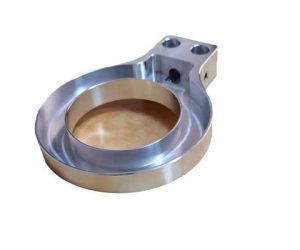Upgrading plastic processing into a high-tech emerging manufacturing industry presents numerous advantages; however, it also entails certain drawbacks and challenges that warrant consideration. These factors may influence the industry's growth and development:
Firstly, the initial investment is substantial. The implementation of advanced manufacturing processes and technologies necessitates considerable capital for acquiring sophisticated machinery, automation equipment, robotics, and digital systems. For small to medium-sized plastic processing enterprises, these high upfront costs can pose significant barriers to entry into the high-tech manufacturing sector.
Secondly, there is a pressing need for skilled personnel. High-tech manufacturing heavily depends on proficient workers capable of operating and maintaining advanced machinery and technology. The industry requires a well-trained workforce with expertise in computer-aided design (CAD), computer numerical control programming (CNC), and automation technologies. Ensuring an adequate supply of skilled labor can be challenging in regions with limited professional training programs.
Furthermore, the risk of technological obsolescence is pronounced. High-tech manufacturing is characterized by rapid advancements in technology; thus, investments in cutting-edge solutions carry the inherent risk of being superseded by newer innovations. Companies must continuously update their equipment and systems to maintain competitiveness.
Additionally, cybersecurity risks are prevalent. As the industry embraces digitization concepts alongside Industry 4.0 principles, vulnerability to cyber threats has escalated significantly. Safeguarding sensitive manufacturing data, intellectual property rights, and production processes from cyberattacks has become imperative.
Moreover, reliance on intricate global supply chains for essential components, materials, and technologies poses additional challenges. Disruptions within these supply chains—stemming from geopolitical tensions or natural disasters—can adversely affect production schedules while escalating costs.
Environmental impact remains a critical consideration as well; some advanced manufacturing techniques employed within the high-tech plastics sector may utilize energy-intensive methods or generate harmful by-products. Striking a balance between technological advancement and environmental sustainability is vital for ensuring responsible practices within this domain.
Market acceptance plays an equally important role; adopting high-tech plastics processing often necessitates educational efforts aimed at fostering market acceptance among traditional customers who may harbor reservations regarding compatibility issues or perceived risks associated with cost implications.
Compliance with regulatory frameworks constitutes another challenge faced by this sector; high-tech manufacturing processes frequently encounter stringent regulatory requirements concerning product safety standards as well as emissions management protocols which add complexity—and potentially cost—to operational procedures.
Protecting intellectual property rights assumes paramount importance given that innovation drives progress within high-tech sectors; companies must develop robust strategies designed to safeguard proprietary knowledge against unauthorized use or imitation effectively.
Lastly but importantly economic volatility represents yet another factor influencing this landscape: fluctuations in demand coupled with shifts in global trade dynamics along geopolitical considerations can all substantially impact both growth trajectories as well profitability prospects across industries engaged therein.
Despite the challenges, there is still great potential to transform plastic processing into high-tech manufacturing, which can improve production efficiency and sustainability. Facing these issues, everyone in the industry can inspire innovation and promote the development of high-tech plastic manufacturing worldwide.
Firstly, with the advancement of technology, the plastic processing industry can utilize cutting-edge technology and equipment to improve production efficiency. For example, using automated production lines and robots can reduce labor costs while accelerating production speed. In addition, the Internet of Things and big data analysis technology can monitor and optimize production processes in real time, further improving efficiency and quality.
Secondly, the plastic processing industry has the opportunity to enhance product sustainability by developing new materials. As consumers' attention to environmental issues increases, the demand for biodegradable and recyclable plastic products is also growing. Therefore, it is very meaningful for the company to invest in creating new environmentally friendly materials that meet market demand while reducing environmental impact.
In addition, cooperation with other industries can also promote innovation in the field of plastics. For example, collaborating with car manufacturers to develop lightweight materials can reduce vehicle weight and energy consumption; Alternatively, collaborating with electronic product manufacturers to develop high-performance plastic components can improve product reliability. This cross industry collaboration promotes technology sharing and accelerates innovation.
Finally, government support plays a crucial role in helping the plastic processing industry transform into a high-tech industry. The government can provide financial support or tax incentives to encourage enterprises to invest in technological innovation and research and development. They can also formulate policies to promote green manufacturing practices and the concept of sustainable development across the entire industry.
In short, although the plastic processing industry currently faces some obstacles, by actively addressing these challenges through targeted actions, this industry is fully capable of developing into a thriving high-tech manufacturing sector. This transformation will not only bring more growth opportunities, but also play a positive role in global sustainable development.
Turning plastic processing into a high-tech industry isn't easy. There are several challenges to overcome.
Mold making is crucial in manufacturing, using methods like injection molding, blow molding, and extrusion to create products. This year, China's mold industry plans big changes. They aim for system improvements, better tech, and quality models to support innovation. Their goal is to make the industry greener and lower in carbon emissions, moving from traditional to high-tech manufacturing quickly. The focus is on upgrading the industry structure and boosting technology levels.
The plastic sector is set for growth, especially in agricultural plastics, packaging materials, and building supplies. There will also be more development in high-tech, valuable engineering plastics and composite materials. This means bigger scale production, advanced tech, and overall growth.
Although there are many favorable factors for the development of mold manufacturing industry this year, there are also many unfavorable factors.
Firstly, the structure of the product is not very reasonable. For example, in China, high-quality agricultural film products account for only 2%, while the proportion of low-end products is as high as 60%.
Secondly, there is uneven regional development. China's plastic products are mainly concentrated in coastal areas such as Guangdong, Zhejiang, Shandong, Jiangsu, and Liaoning, with a significant gap compared to inland provinces, especially in the western region.
Thirdly, the scale and structure of enterprises are also unbalanced. In this industry, the proportion of small and medium-sized enterprises exceeds 99%. They face some problems, such as information asymmetry with a few large enterprise groups, low product technology content, and simple and repetitive production.
Fourthly, the overall equipment level is not high and cannot meet the needs of high-end consumption and high-tech fields.
Fifth, the investment in technology and the ability to develop new products are relatively weak. The research and development efforts in advanced molding processes, high-performance structural design, and customized product design are insufficient, and there are few products with independent intellectual property rights.
Sixth, low industrial concentration and weak competitiveness. According to the proportion of total output value of 10 key enterprises in the industry, the industrial concentration of the plastic products industry is only 5%.
Seventh, frequent international trade frictions make exports more difficult.
Eighth, macroeconomic policies such as the "plastic restriction order" and "purchase restriction order" have also had an impact on the industry.
The plastic processing industry has been around for decades, and it has gone through several transformations. One of the most significant transformations that the industry is currently undergoing is the shift towards high-tech emerging manufacturing. While this shift presents several benefits, there are also unfavorable factors that could hinder the transition. In this article, we will discuss the unfavorable factors of transforming plastic processing into a high-tech emerging manufacturing industry.
Lack of Skilled Labor
The transition to high-tech emerging manufacturing requires skilled labor to operate advanced machines and equipment. However, there is a shortage of skilled labor in the plastic processing industry, which could hinder the transition. The industry needs to invest in training and education to produce a competent workforce that can operate advanced machinery and equipment.
High Capital Investment
The transition to high-tech emerging manufacturing requires significant capital investment to purchase advanced machinery and equipment. This high capital investment could pose a challenge for small and medium-sized enterprises (SMEs) in the plastic processing industry. The industry needs to find innovative financing options to help SMEs acquire the necessary machinery and equipment to transition to high-tech emerging manufacturing.
Market Competition
The plastic processing industry is highly competitive, and the shift towards high-tech emerging manufacturing could increase the competition further. This competition could lead to price wars, which could negatively impact profitability. The industry needs to develop a competitive advantage through innovation and technology to stay ahead of the competition.
Regulatory Challenges
The transition to high-tech emerging manufacturing could pose regulatory challenges for the plastic processing industry. The industry needs to comply with regulations and standards that are often complex and constantly evolving. Compliance with these regulations requires investment in research and development, which could pose a challenge for SMEs.
Conclusion
Switching to high-tech manufacturing can bring big benefits to the plastic processing industry, like making production faster and better. But it also comes with some tough challenges, such as not having enough skilled workers, needing a lot of money upfront, facing tough competition in the market, and dealing with rules and regulations.
To make this switch smoothly, the industry has to come up with smart plans. It should team up with key players like the government, investors, and schools to find new ways to tackle these problems. By working together, they can create clever solutions that help everyone succeed.
What is the negative impact of plastic technology?
Plastic technology can have several negative impacts, including issues such as environmental pollution, greenhouse gas emissions, and the depletion of non-renewable resources. The improper disposal of plastic waste can lead to significant environmental concerns and affect the health of humans, animals, and the ecosystem.
What are the challenges of plastic production?
Plastic production faces several challenges, including high manufacturing costs, potential supply chain disruptions, and limited access to feedstock. Additional challenges that the industry faces include increasing environmental concerns, rising energy costs, and the adoption of sustainable measures to ensure regulatory compliance.
What is the biggest challenge for the plastics recycling industry?
The biggest challenge for the plastics recycling industry is the lack of infrastructure, technology, and public awareness. The complex nature of the recycling process, limited recycling facilities, and inadequate market demand for recycled products pose significant challenges to the industry.
What are 3 negative impacts of plastic?
Using plastic can have several bad effects, like pollUsing plastic can have several bad effects, like poll contaminating oceans, and it can cause big problems for the environment, hurting wildlife and the ecosystem. Plus, plastic trash can take hundreds of years to break down, filling up landfills and making places look messy.




